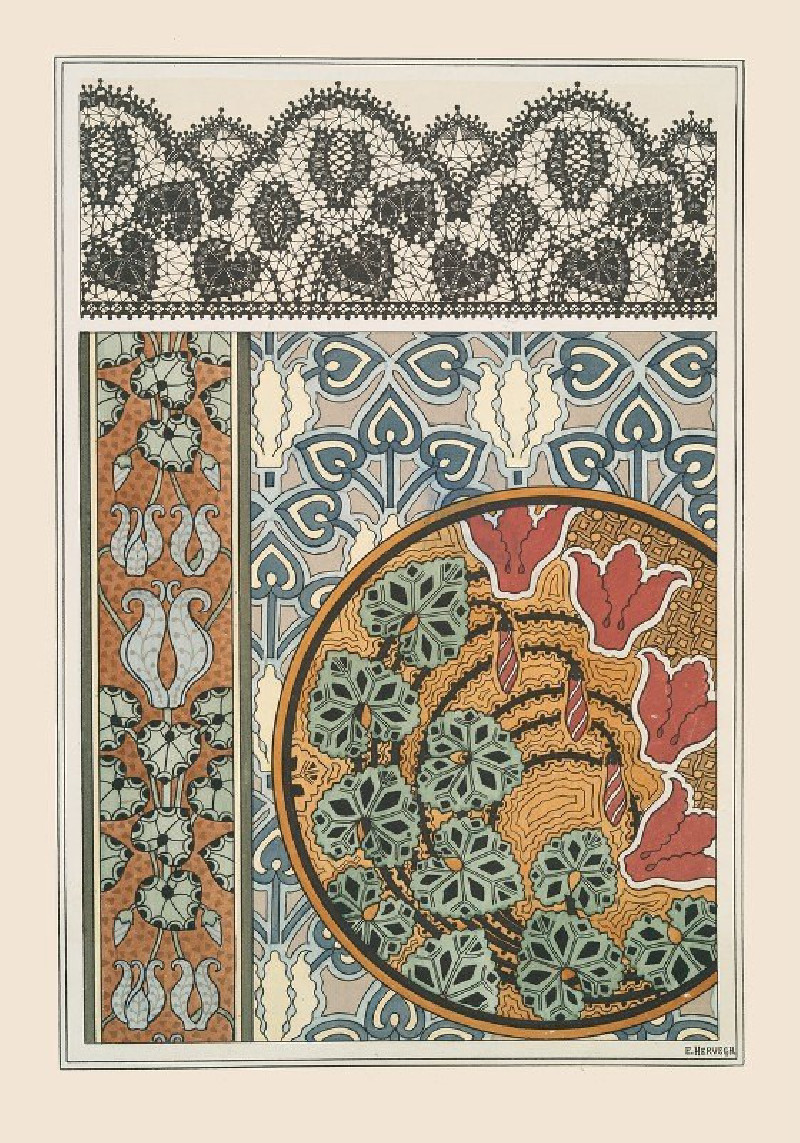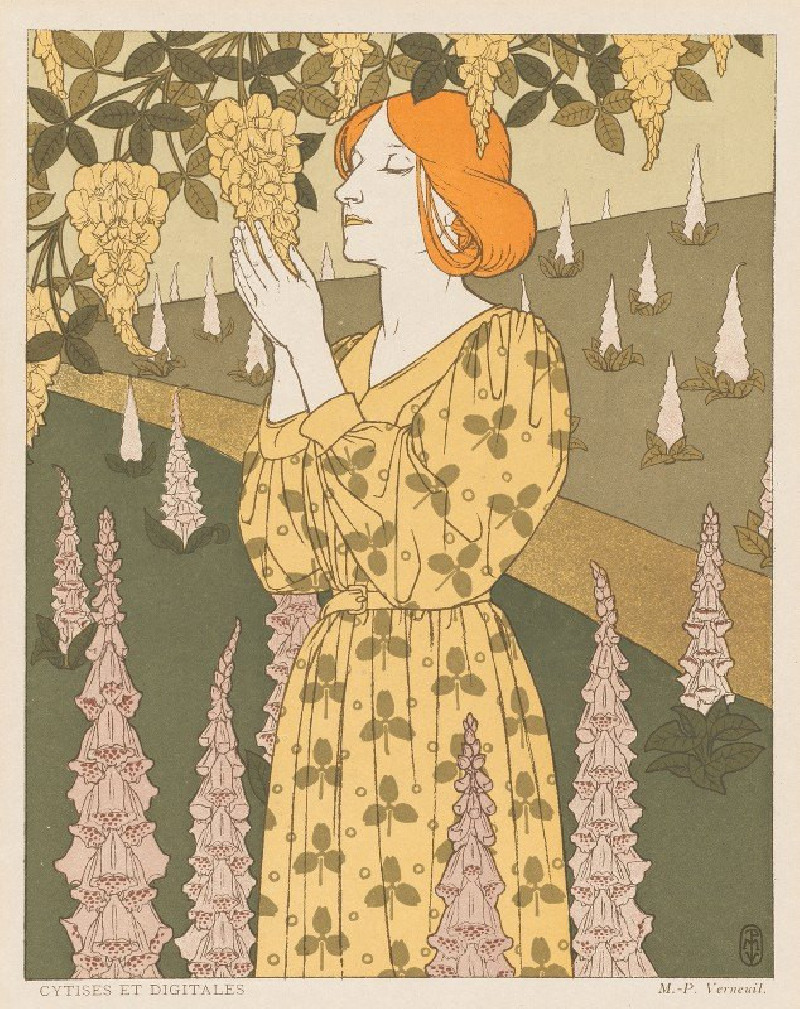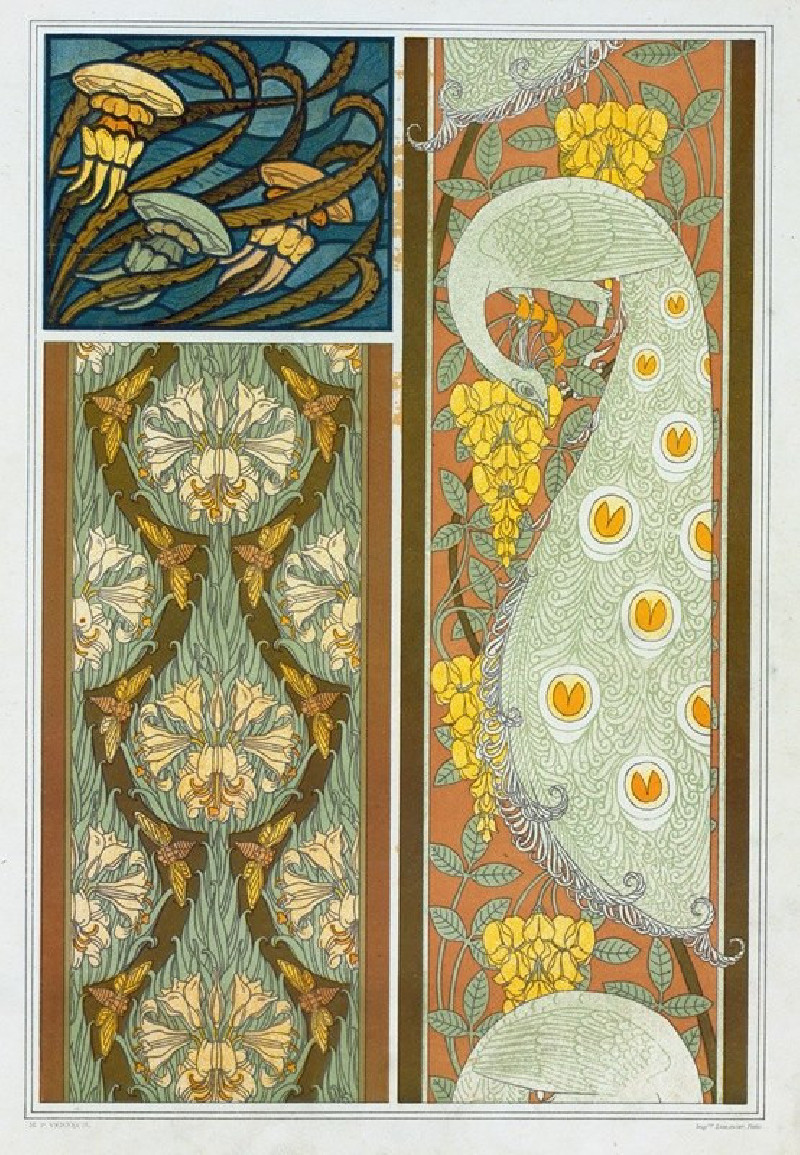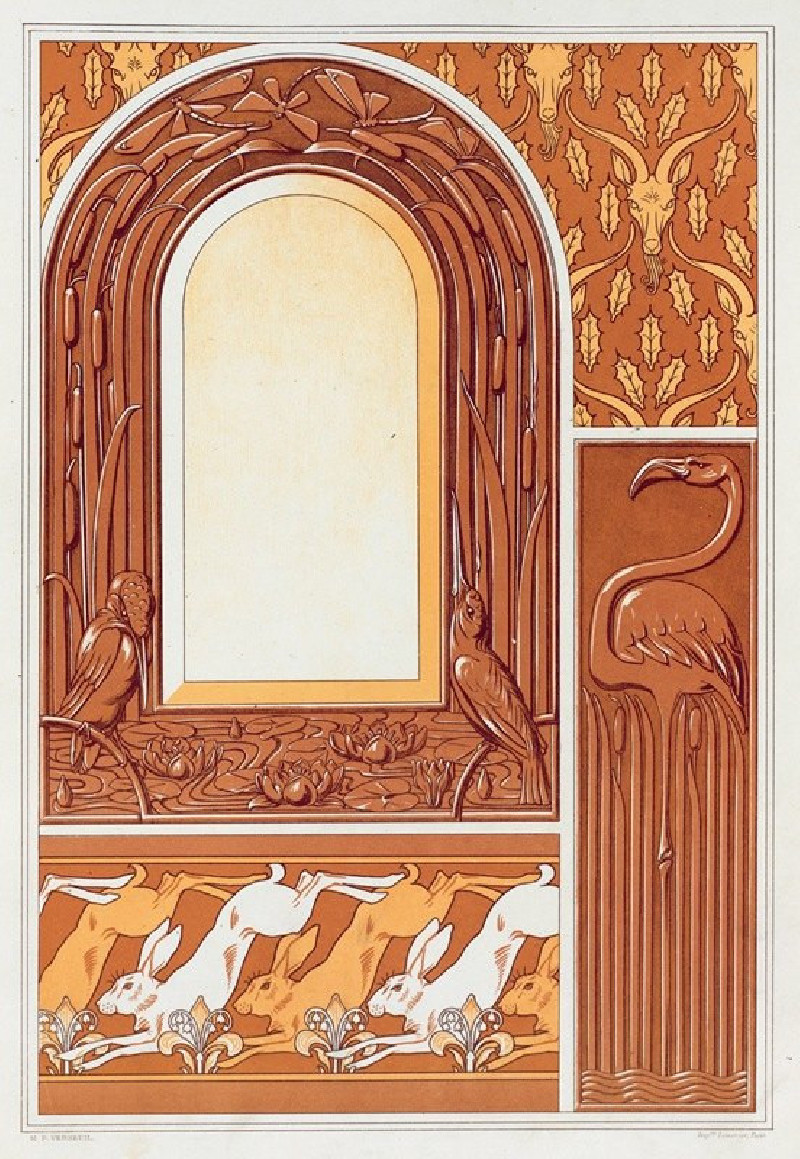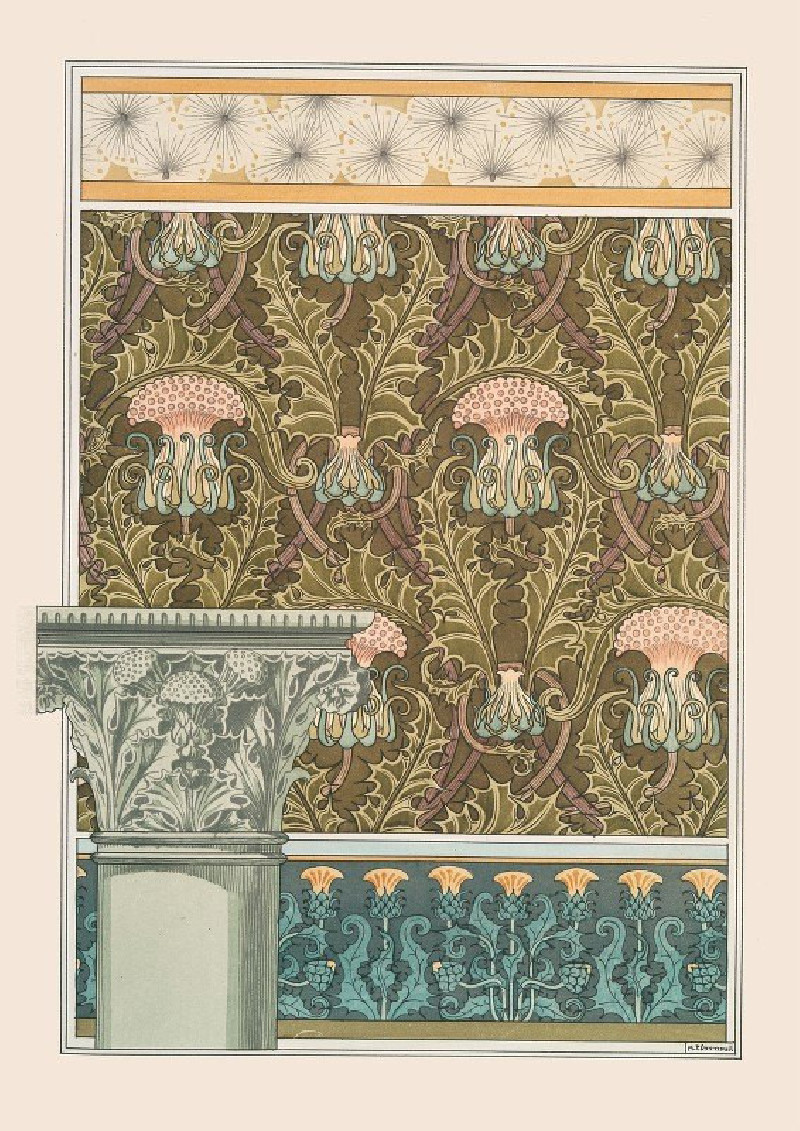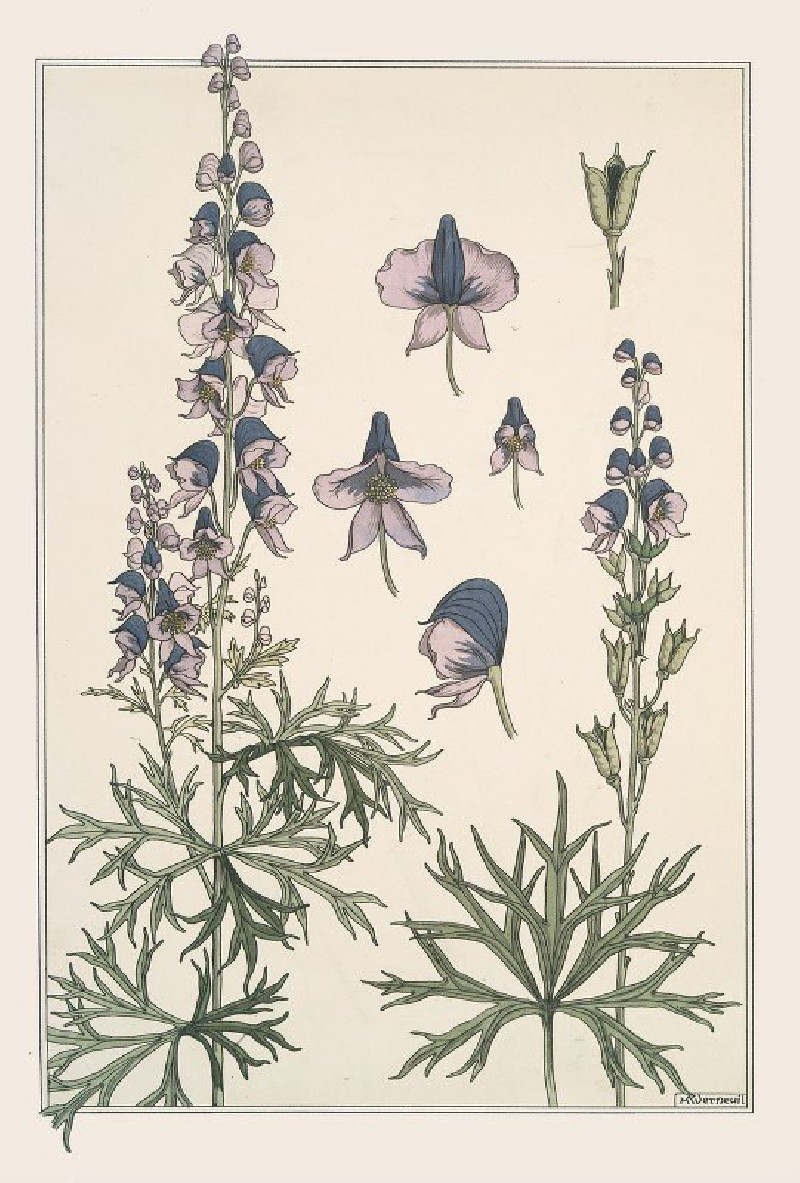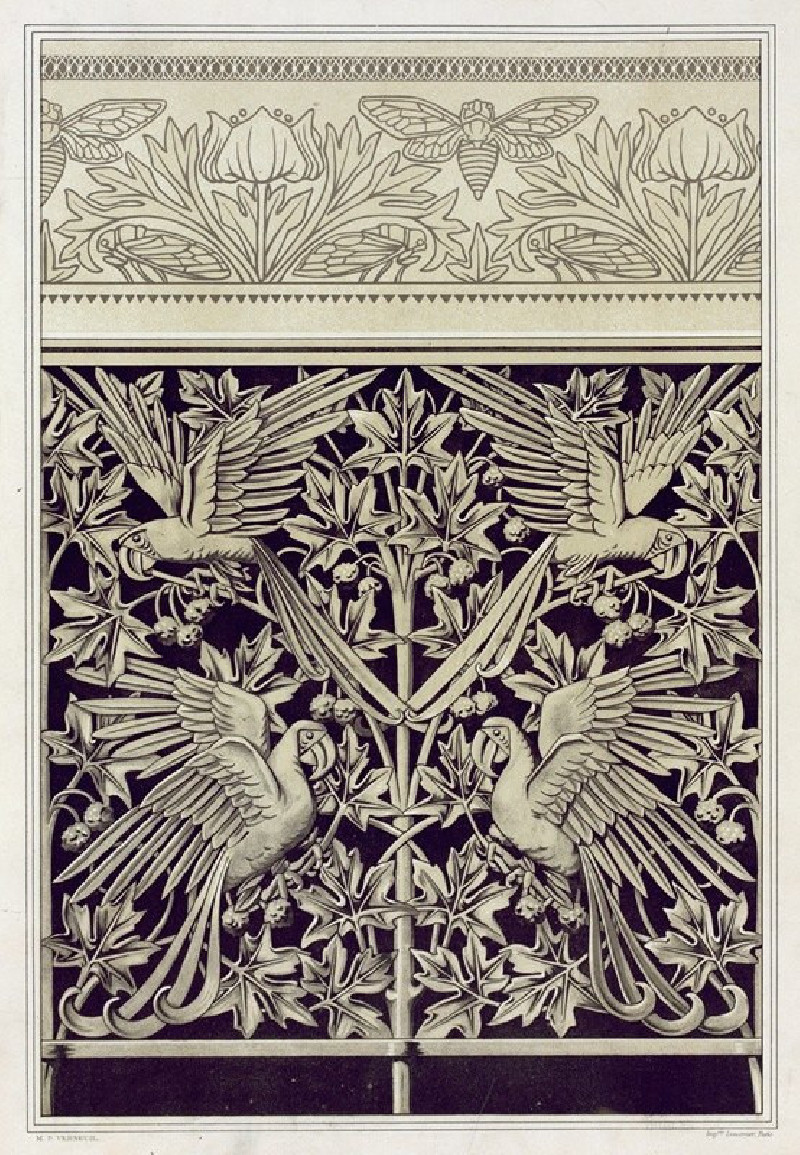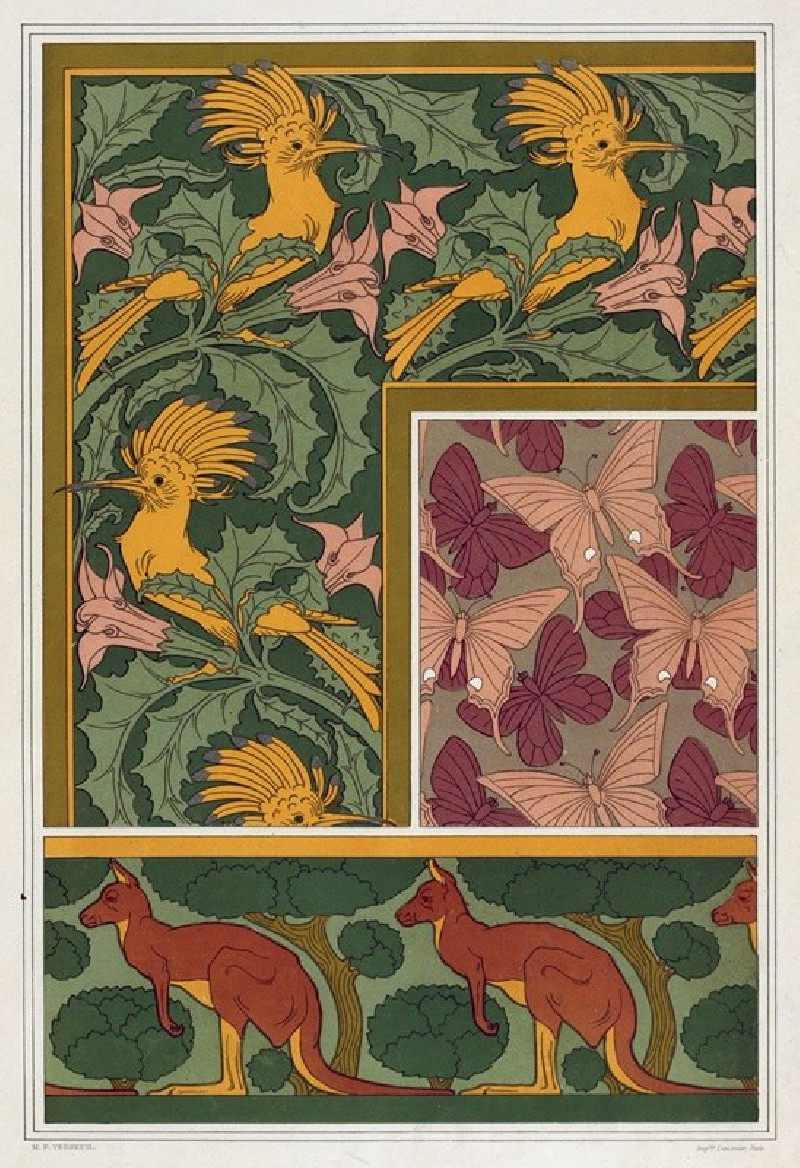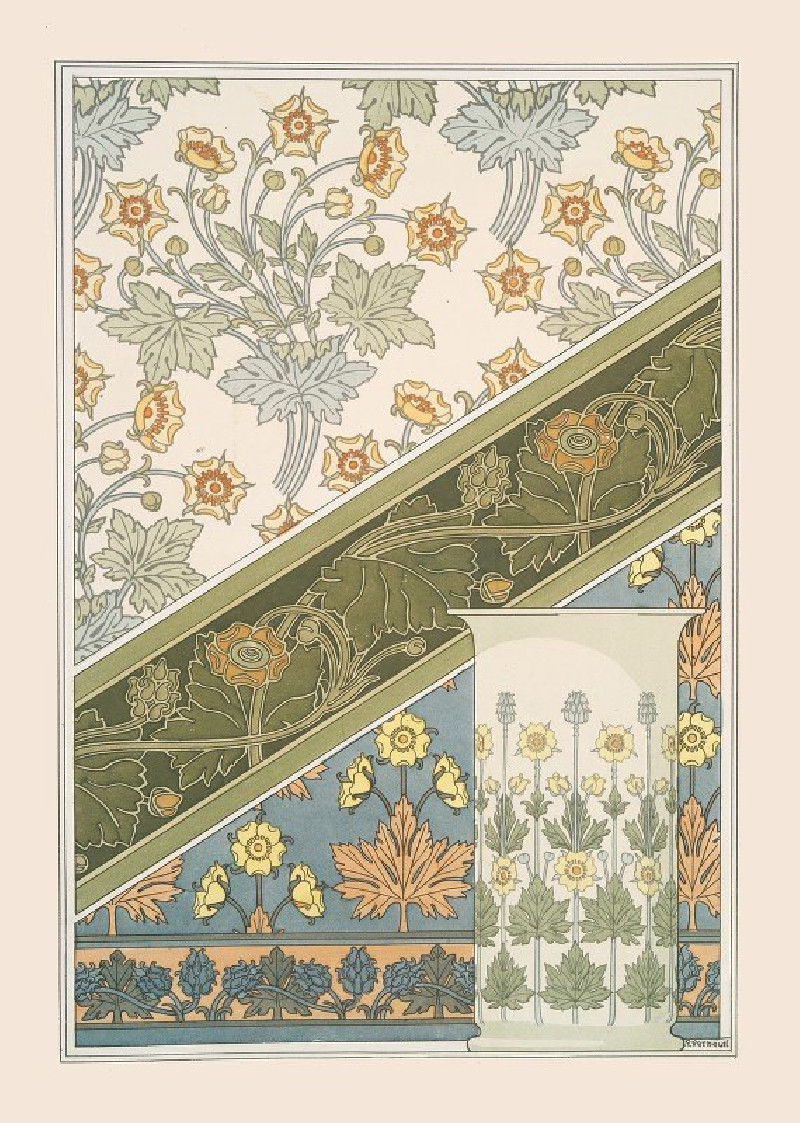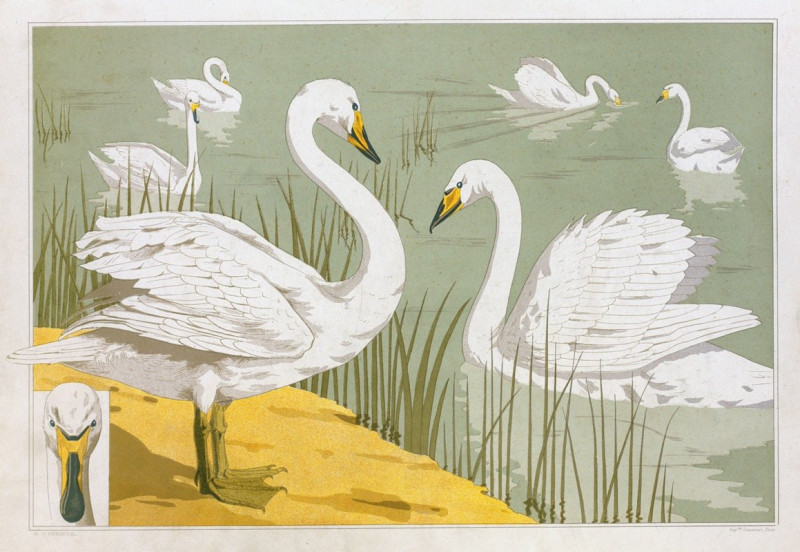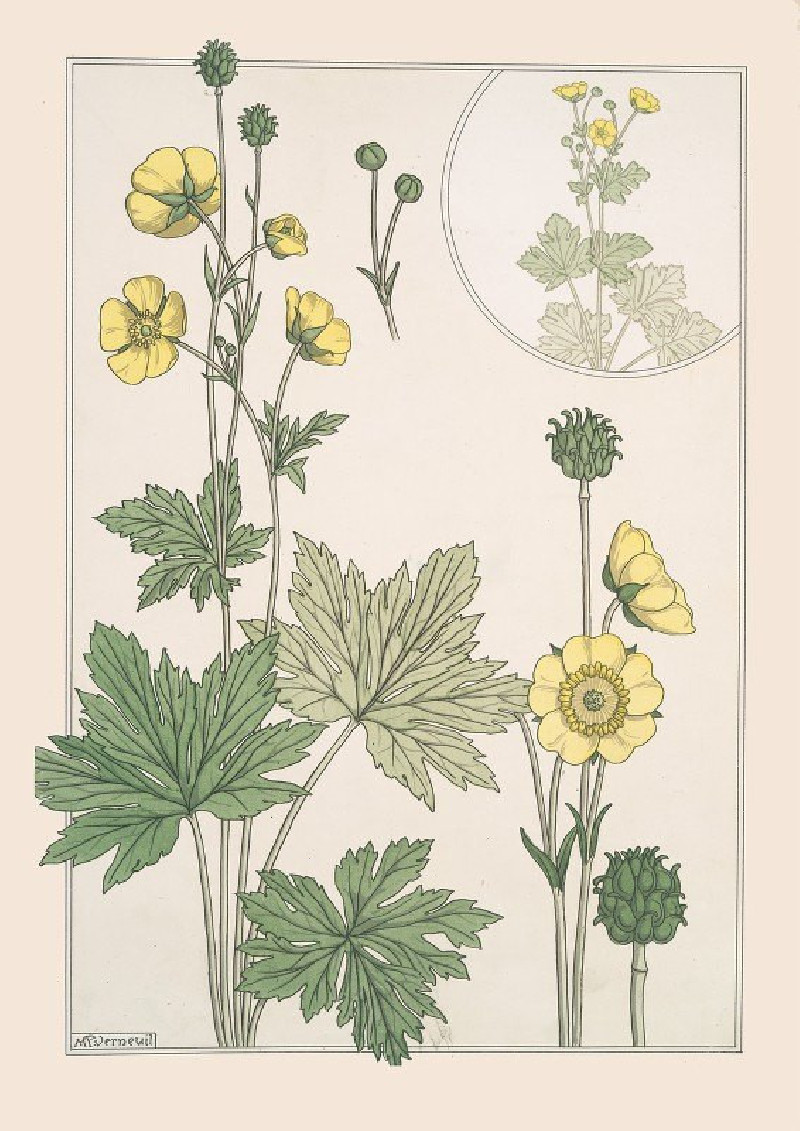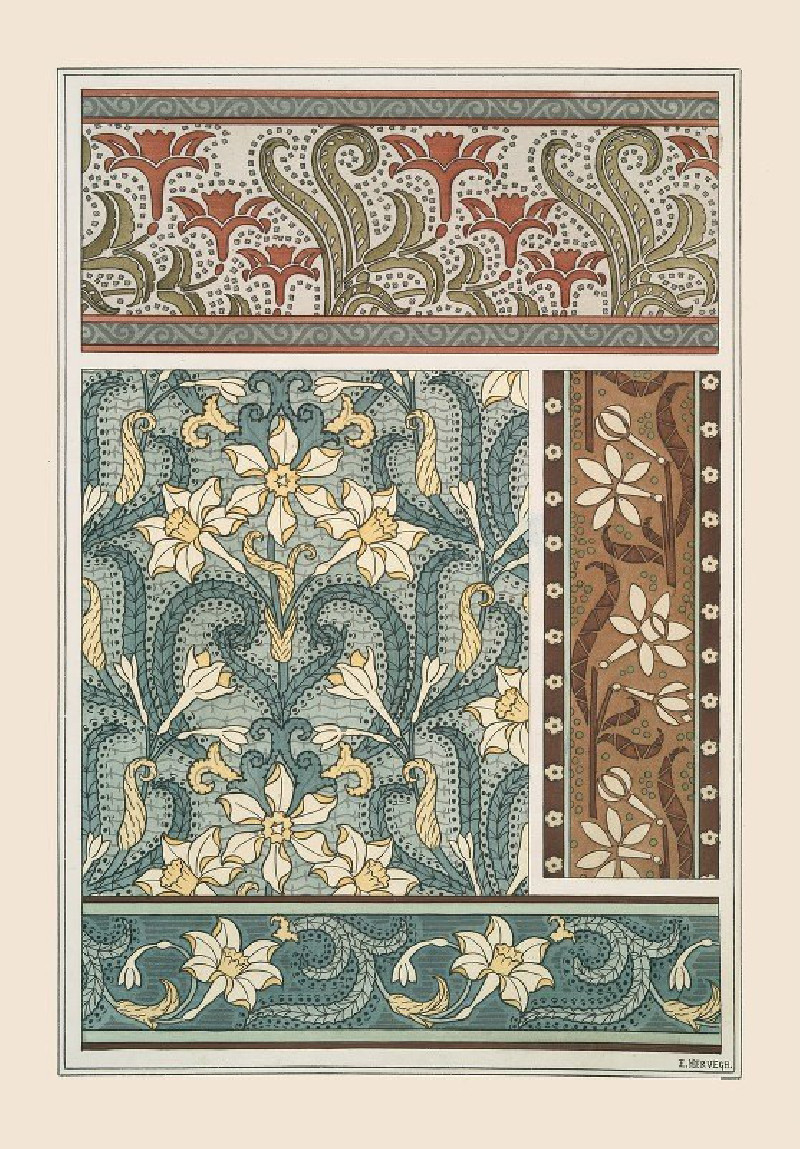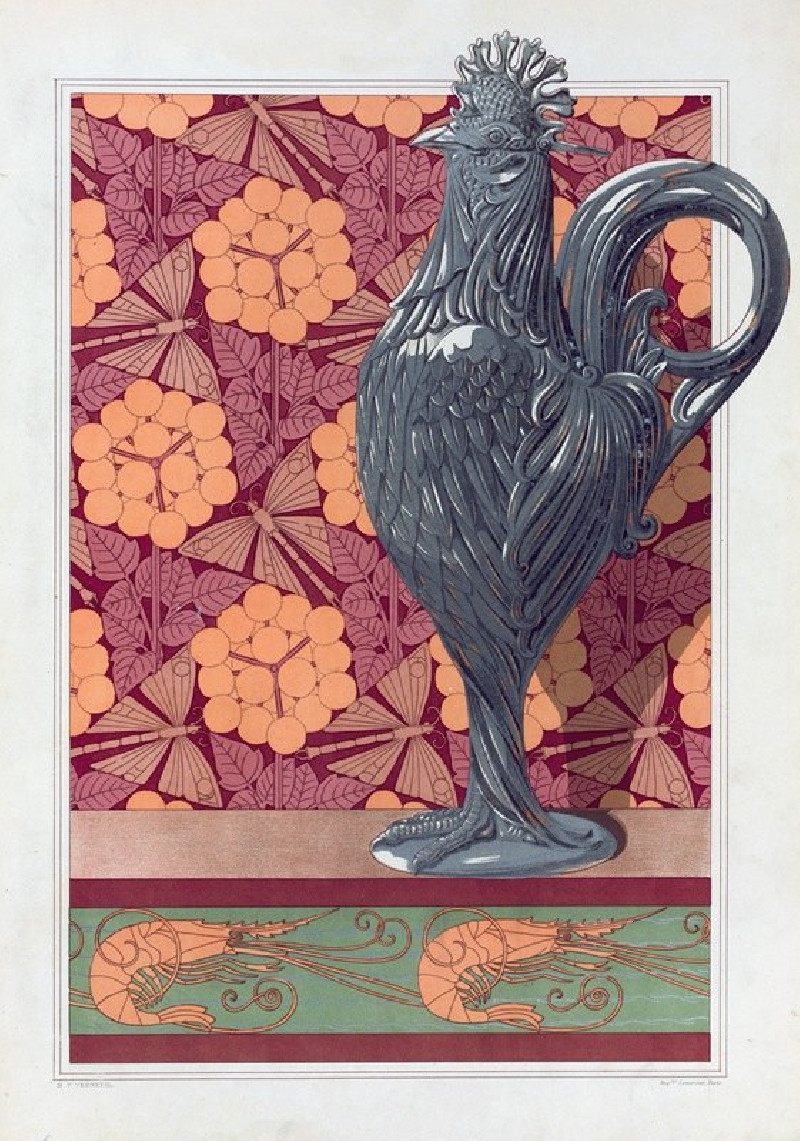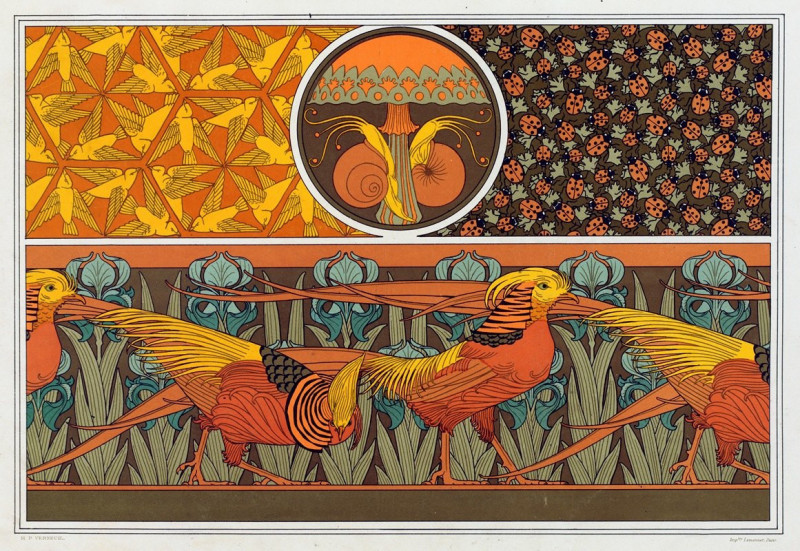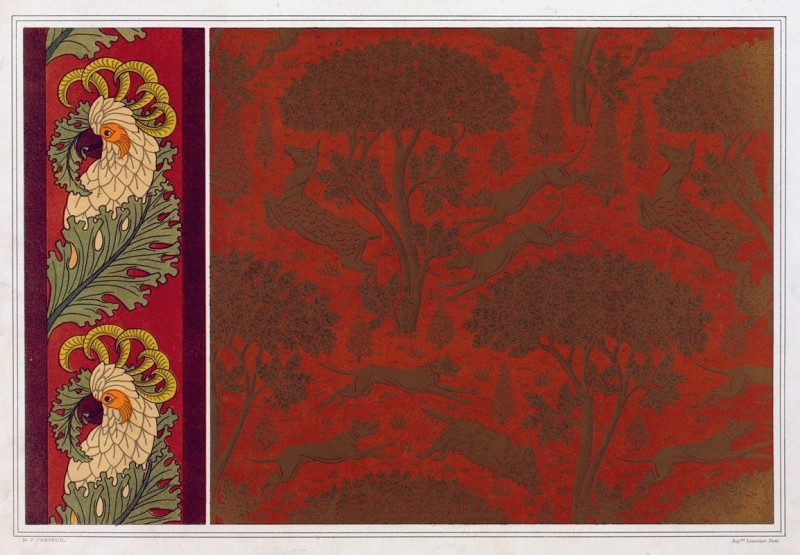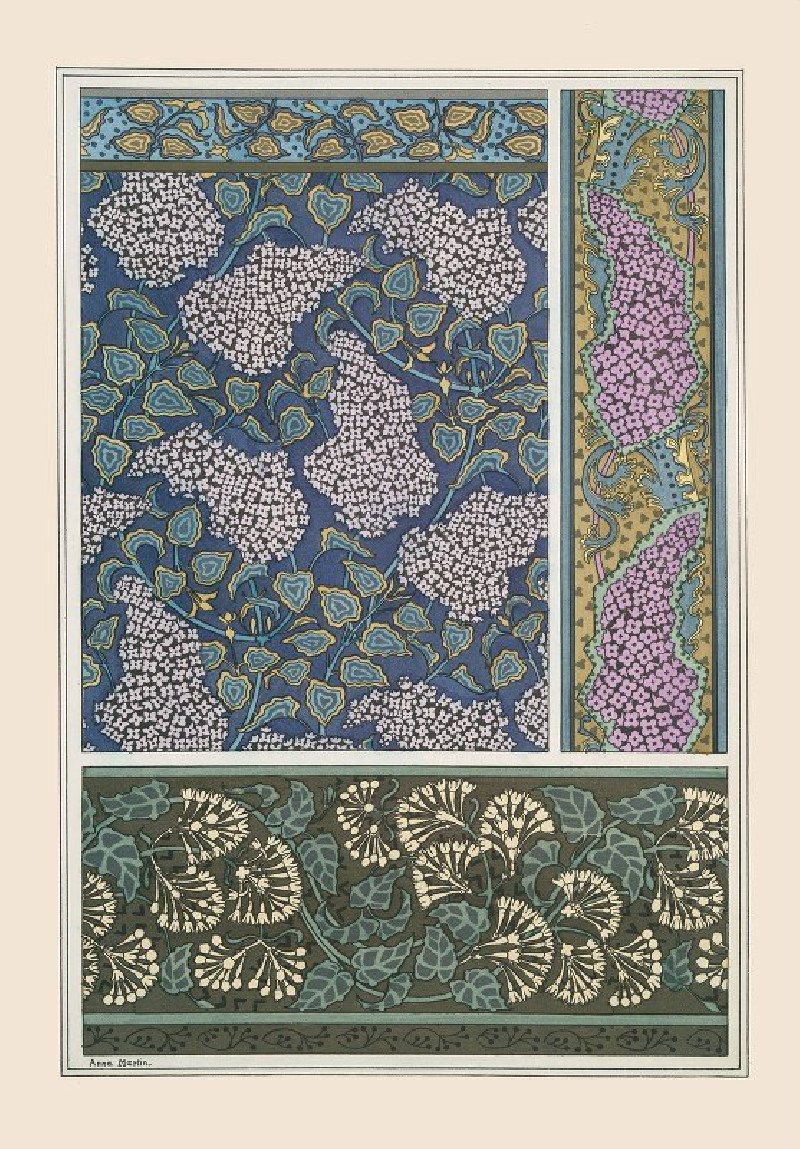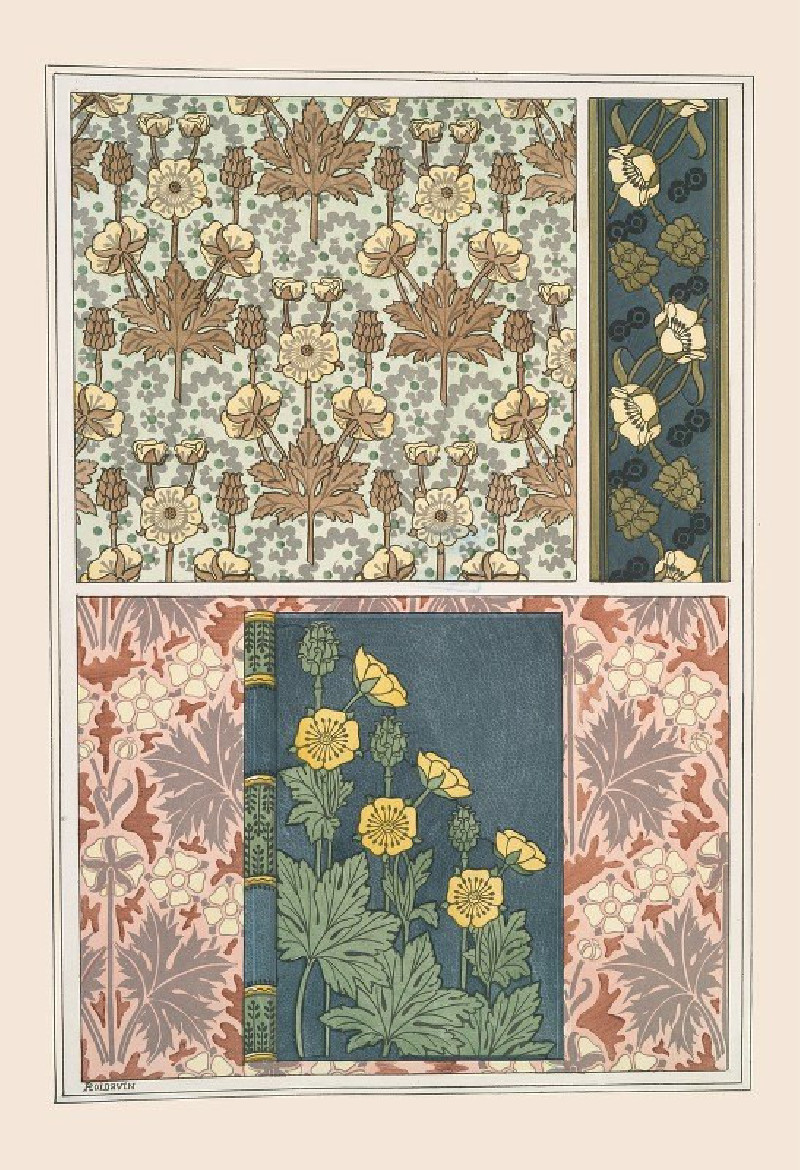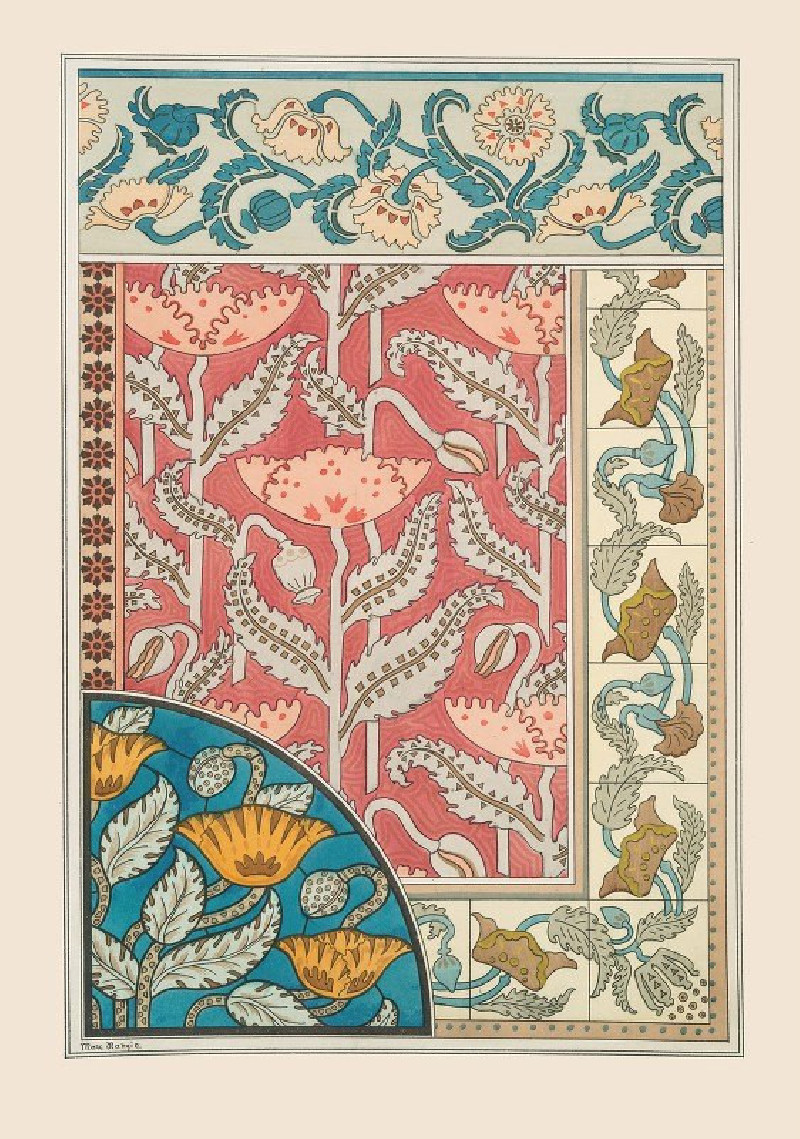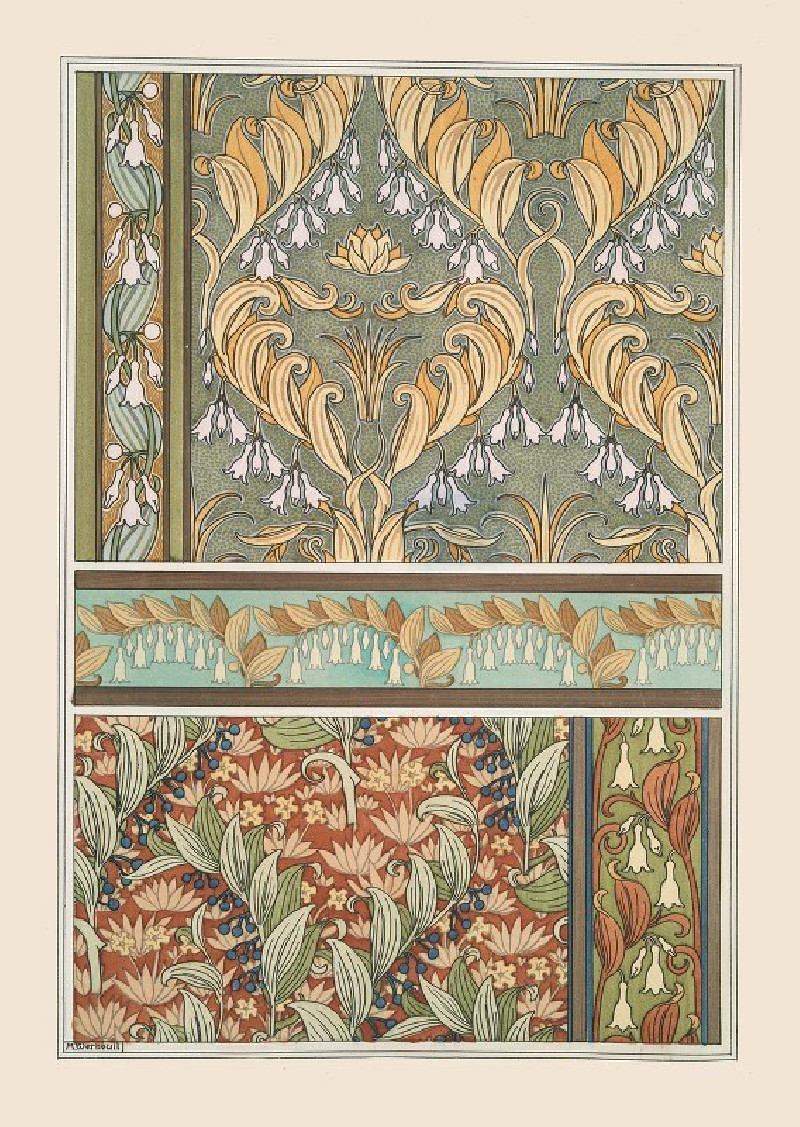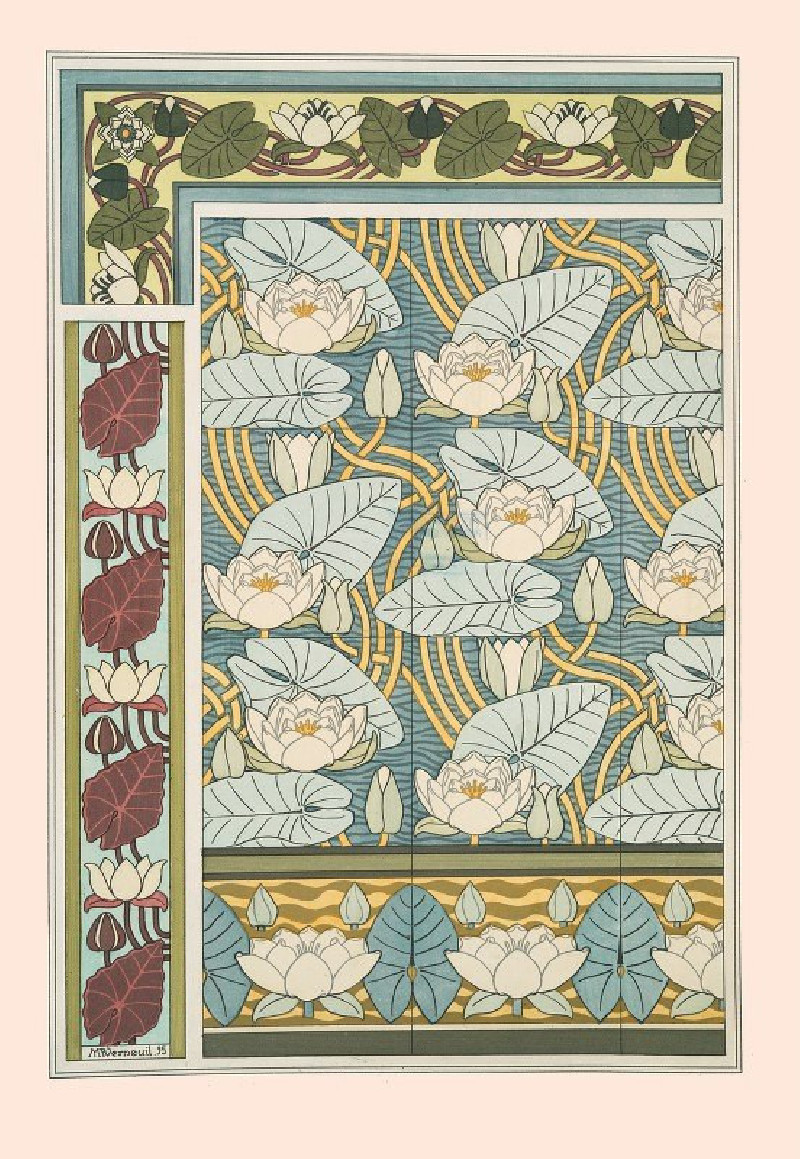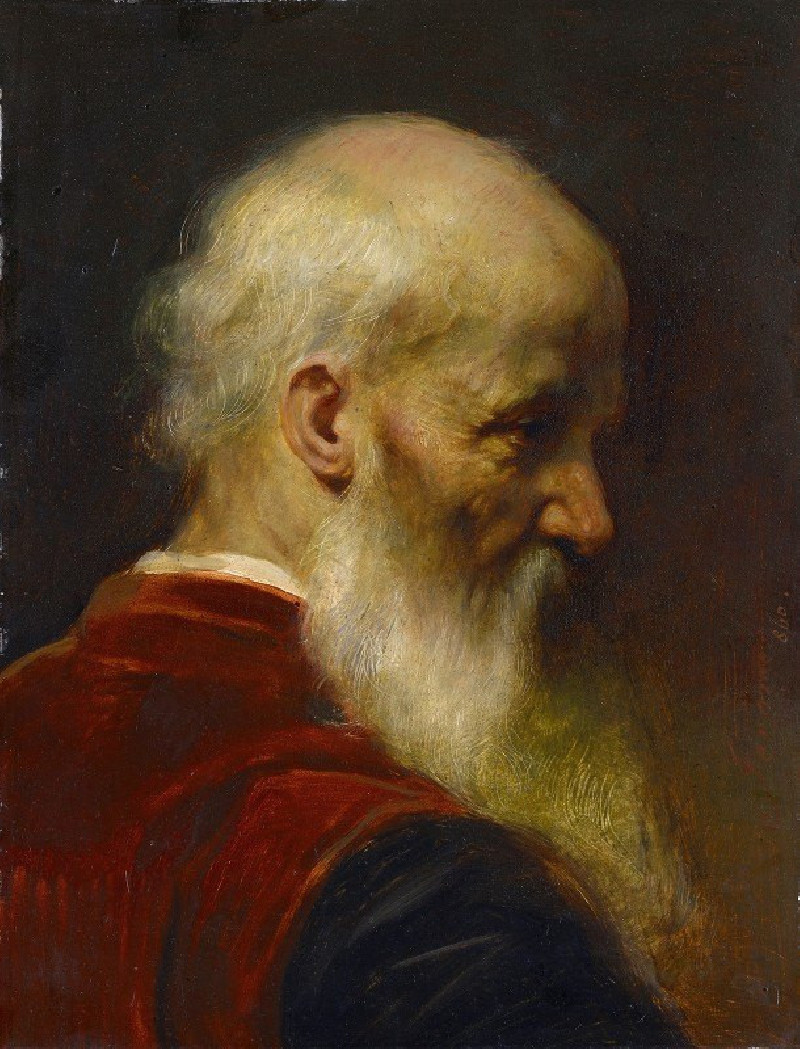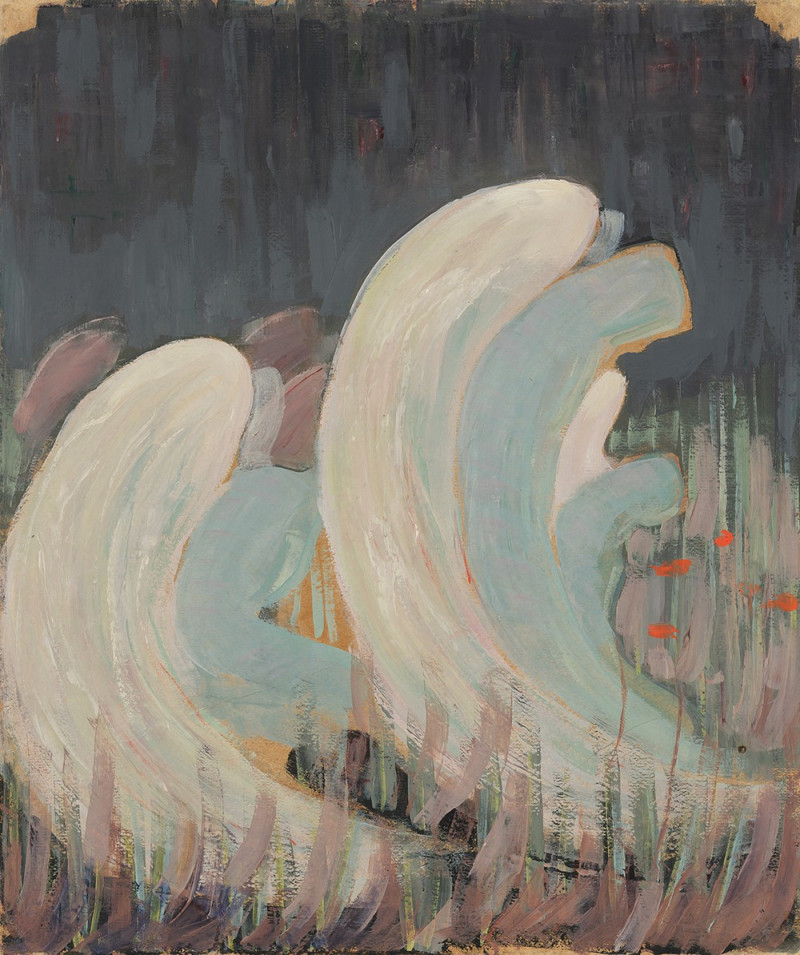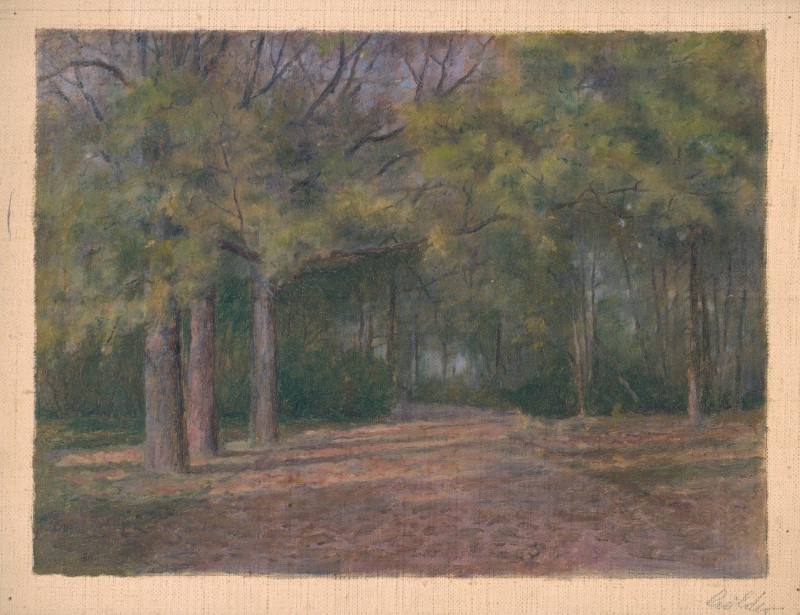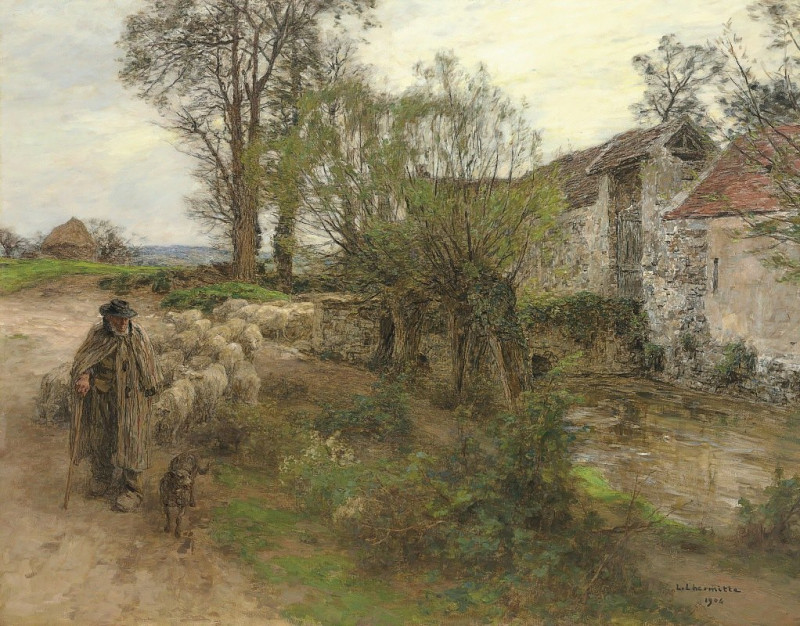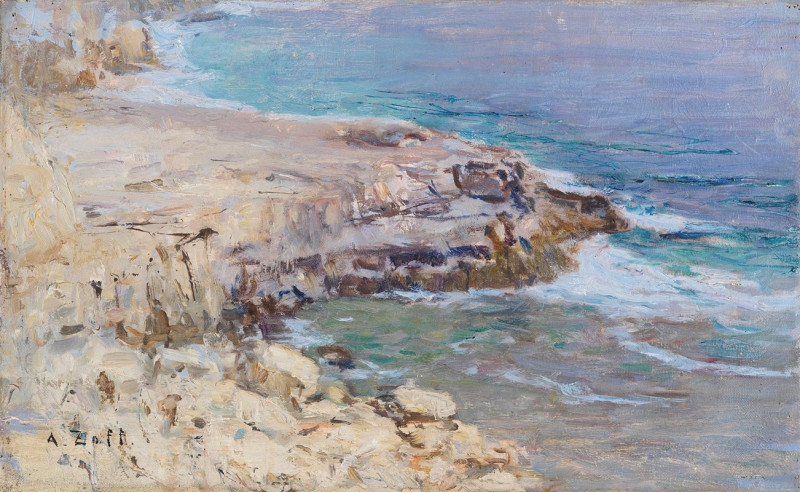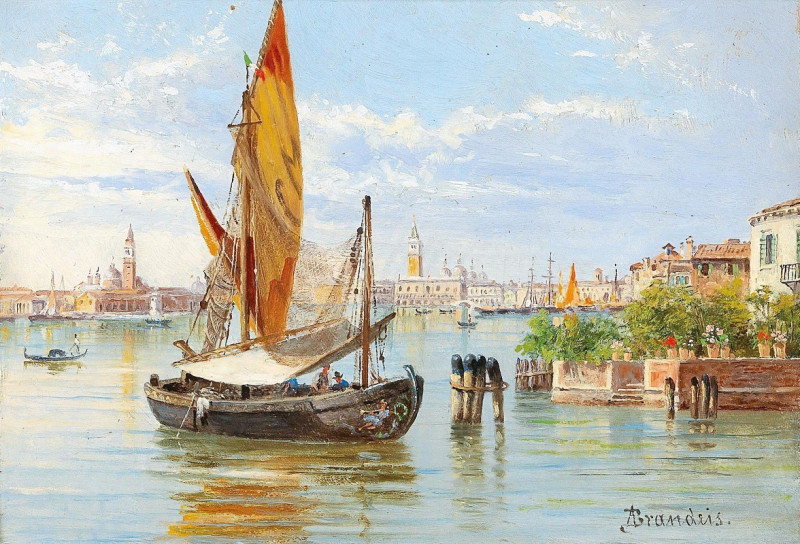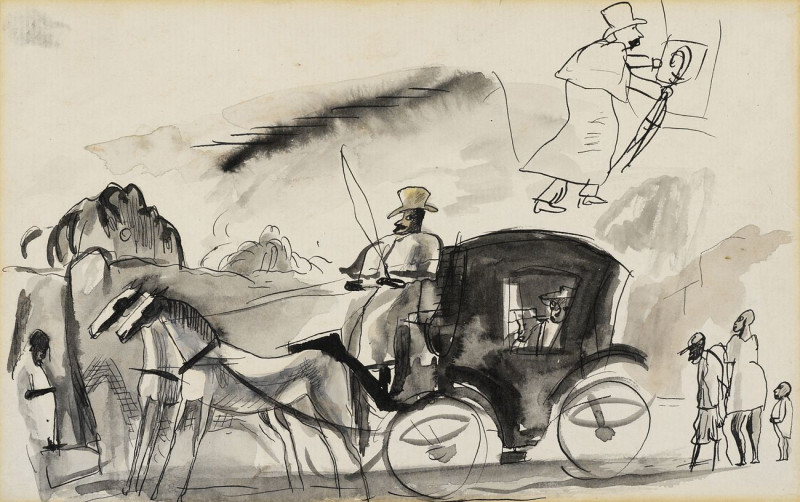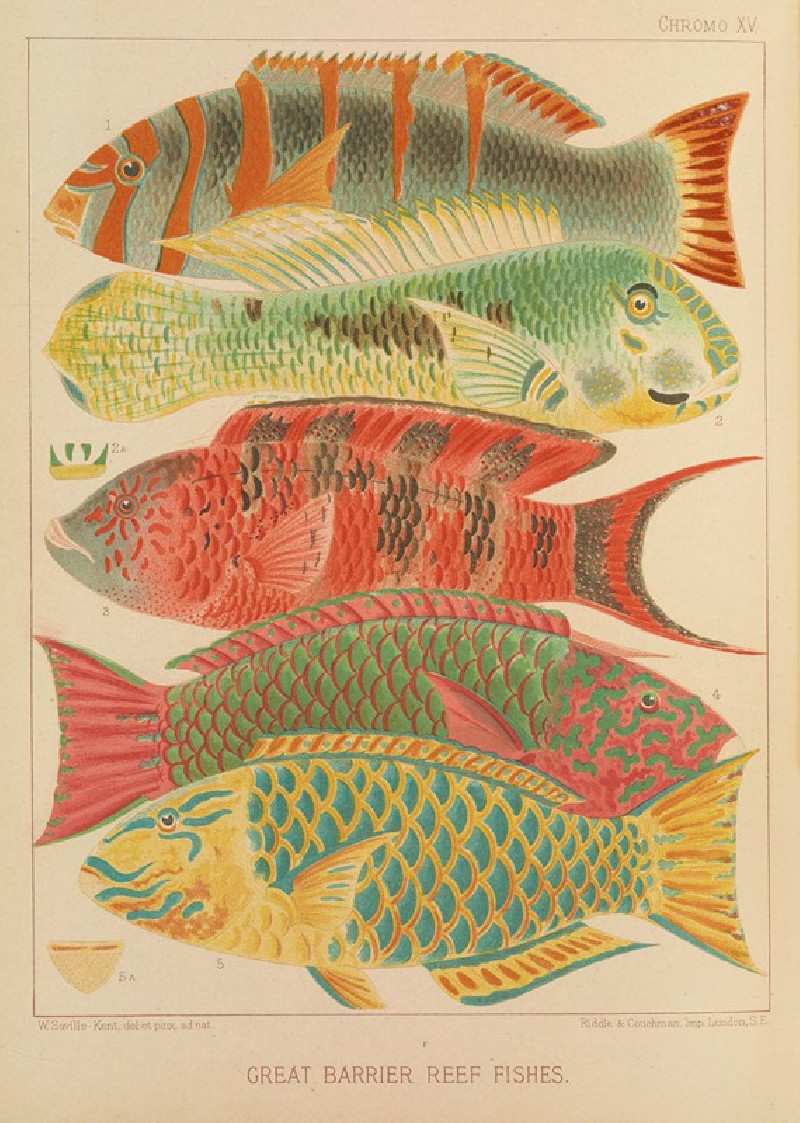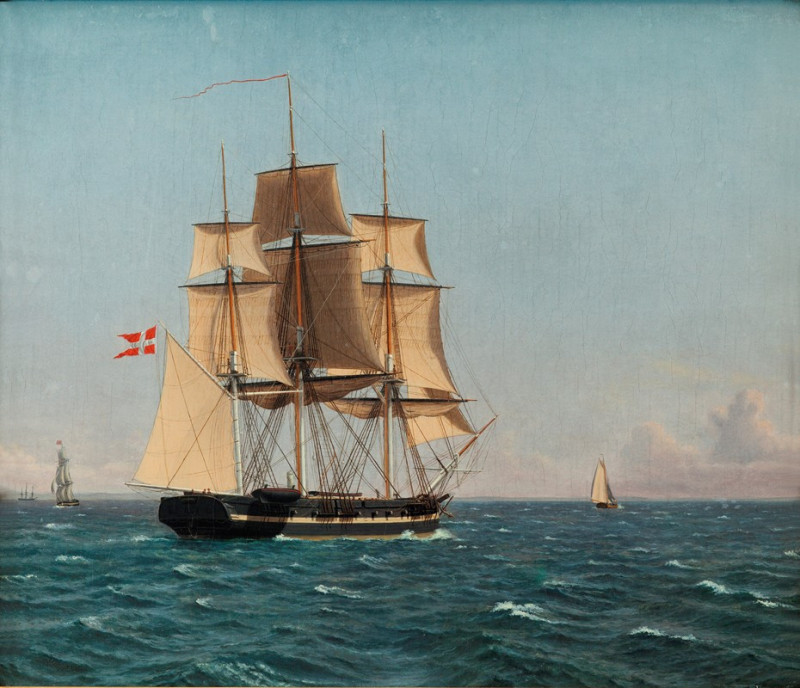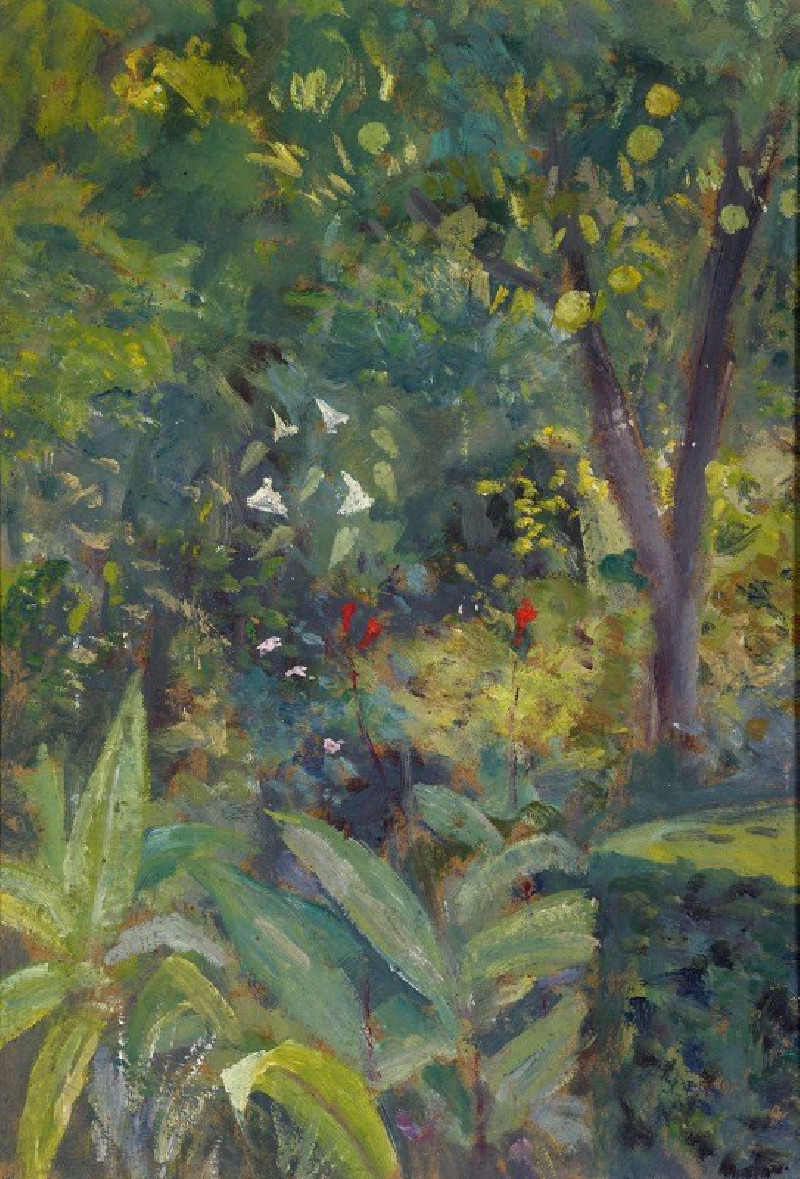Cyclamen 3 (1896)
Technique: Giclée quality print
Recommended by our customers
More about this artwork
Welcome to our exploration of Maurice Pillard Verneuil's "Cyclamen 3" (1896), an exquisite example of Art Nouveau design that showcases the enchanting synthesis of nature and artistic ornamentation.This intricate composition is an elegant tapestry of design and color, divided into distinctive panels each blossoming with its own floral motif. The top panel is a serene sequence of lace-like patterns, creating a delicate veil of interlocking floral designs that suggest a filigree of garden-inspired arabesques. This mesh of dark, almost black motifs stands in dramatic contrast to its light background, emphasizing the precision and intricacy of Verneuil’s designs.Adjacent to this, the left-hand strip features a vertical design combining stylized floral elements and slender leaves that ascend gracefully. The placid blue tones, intertwined with sandy hues and pops of leafy green, capture the calm and organic aesthetic typical of Art Nouveau.The central and most captivating piece of this artwork is a circular frame filled with an array of ornately patterned cyclamens set in a vibrant palette. The cyclamens are rendered in deep reds and pale pinks, nestled against a backdrop of rich golden and earthy tones. This panel not only highlights the natural form of cyclamens but also illustrates Verneuil’s skill in creating depth and texture through color layering.
Delivery
Returns
Maurice Pillard Verneuil was a French artist and decorator in the Art nouveau movement. He was born in Saint-Quentin, France. Maurice Pillard Verneuil learned his trade from the Swiss designer Eugène Grasset. Maurice Pillard Verneuil then went on to become a well-known artist and designer. He was inspired by Japanese art and nature, particularly the sea. He is known for his contribution to the art deco movement and, in particular, his use of bold, floral designs in ceramic tiles, wallpapers and other furnishing textiles.

